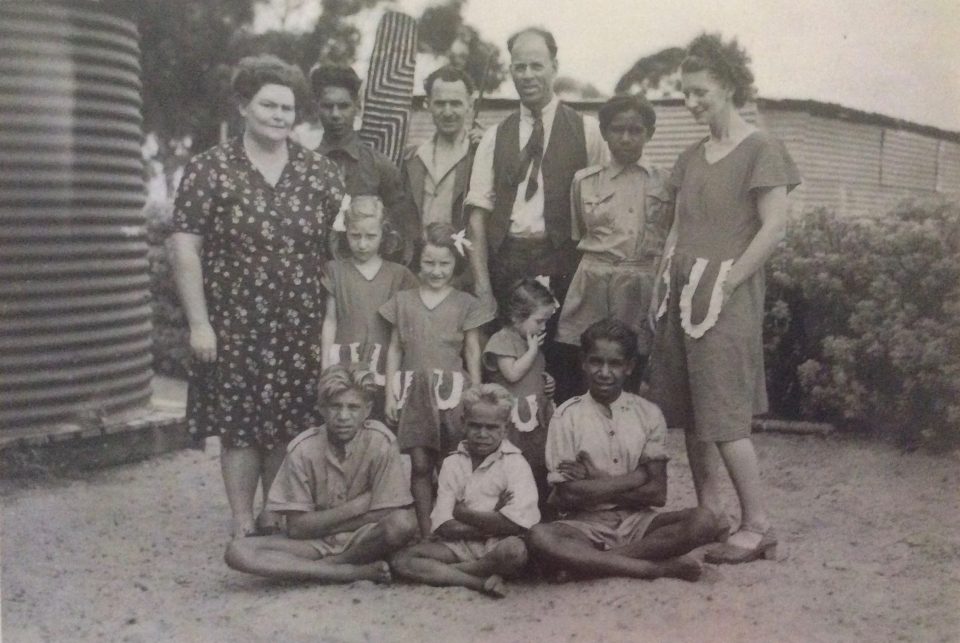Mr. and Mrs. White with some of the Carrolup boys and the Peet family. Back row: Barry Loo, Mr. Peet, Noel White, Adrian Allen and Mrs. Peet. Middle row: Lily White and the three Peet girls. Front row: Parnell Dempster, unidentified boy and Reynold Hart. Photograph taken in 1949. Noel & Lily White Collection.
Noongar people consider the Carrolup Story to be one of the most important stories about their culture since the colonisation of Western Australia by Europeans. The children’s art has inspired four generations of Noongar artists.
The Carrolup Story is one that enhances cultural pride, which in turn facilitates connection to culture. Connection to culture is the single most important factor in helping Aboriginal people and their communities heal from intergenerational trauma and its consequences (e.g. psychological problems, addiction, suicide).
Mrs. Rutter told the Carrolup boys that she would do all in her power to make their work and circumstances known throughout the world. We are taking up Mrs. Rutter’s mantle, having in our possession far more powerful tools to tell, and distribute, this Story to the world.
Mrs. Rutter believed that the boys could help show a way forward for Aboriginal people in Australia. Even though the boys have passed on, their spirit remains today, and they can still help ‘show the way’. Their Story illustrates resilience in the face of considerable adversity.
Noel White was a man ahead of his time. His approach to education, using the arts to facilitate communication, learning and creativity was revolutionary for the time.
He showed the essential elements underlying the healing of trauma (and its consequences) long before researchers and practitioners outlined their ideas. He demonstrated the key importance of empowerment and connection, and of creating an environment of safety. He provided hope, and helped create in the children a sense of belonging, a sense of pride, and a strong identity.
By telling the Carrolup Story, we can enhance awareness of what is required to help people overcome trauma and its consequences.
Our Story shows the impact of prejudice and racism, which are strong barriers to healing from trauma and its consequences, and how people rise above prejudice and racism. By enhancing public awareness of the issues that have been faced by Aboriginal people, and celebrating their successes, we aim to help reduce prejudice and racism.
We will also help non-Aboriginal people learn from Aboriginal people and their culture. For example, there is much that Aboriginal people can teach us about protecting the environment. Moreover, their holistic approach to wellbeing is far richer than western culture’s view of mental health.
Our ambition is that many more Aboriginal and non-Aboriginal will walk alongside each other on equal terms to help create a society where people have an improved wellness, are more respectful, caring and empathic towards their fellow man, and more protective of our planet. Telling the Carrolup Story is a stepping stone towards us contributing to this ideal.


